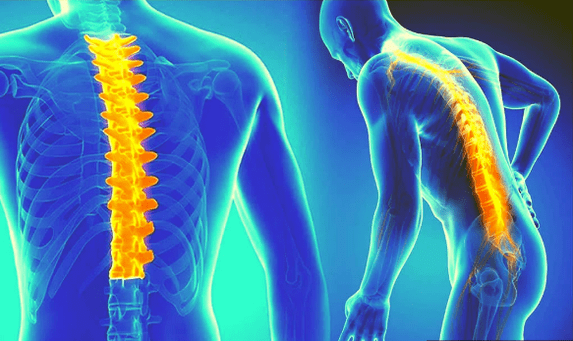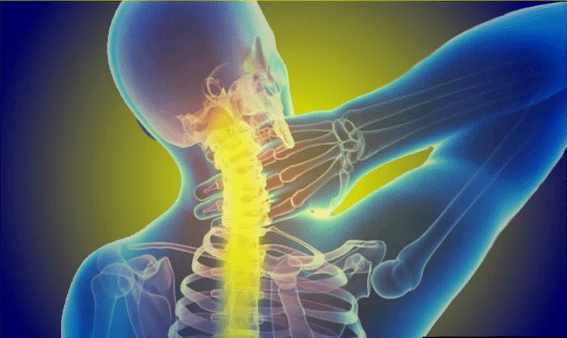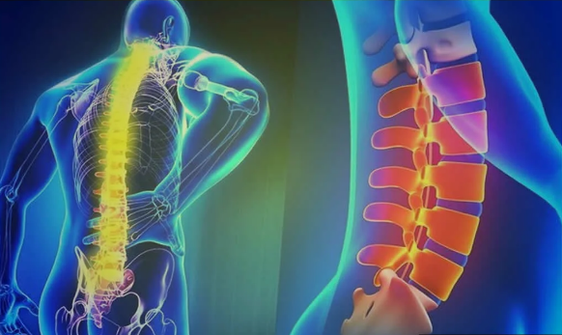
The problem of cervical osteochondrosis: symptoms, diagnosis and spinal treatment methods is relevant to a large number of people over 35 years old.Although young people also have this problem.It's the fault of a modern sedentary lifestyle, and you can't come anywhere in essence.Office-Stol-Computer-Divan and vice versa.
What does osteochondrosis mean
The term osteochondrosis passed from the Greek language ὀστέον - bone and χόνδρος - cartilage.In the end, the suffix - was added.As a result, we found: oste osteo (bone) Handra (cartilage) Osis (not an inflammatory disease). It will be thus in a simple language - this is not an inflammatory disease of the bone -in -headed system.
The term osteochondrosis became synonymous with any back pain.Back hurts?"So you have osteochondrosis, my friend."
The reasons for the development of osteochondrosis
Osteochondrosis problems are not just a cause of appearance.The reasons are several dysfunctional situations for the spine:

- Excessive loadIf you take the cervical spine, this is the most mobile spine and one way or another experiences the largest dynamic loads, that is, it has more movement for life;
- Static load - This is a sedentary work, for example;
- heavy physical work - Occupational disease;
- adverse hereditary situations;
- generally age and aging factor.
Age does not always play a single role, but, as they say, we begin to erase from the moment of birth or, at least from the moment of puberty.Consequently, age also plays a significant role.
Osteochondrosis is a radiological condition, that is, it should be confirmed by an X root. In principle, if you really want, changes in the spine suitable for the term osteochondrosis can be found in anyone over 30 to 35 years.
Osteochondrosis symptoms
It is very difficult to say that it is osteochondrosis that causes certain pain in the spine.Since acute pain syndrome more often in the cervical spine gives muscle spasm, that is, spasm of the muscles of the collar area.
Muscle spasm can give chronic pain from another state:
- Spondylosis, spondylolistz bone growth (osteophytes);
- Vertebral displacement;
- Instability in the cervical spine;
- Bear and disc protrusion.
Osteochondrosis is a background state and can rarely give some symptoms.
More often, osteochondrosis is combined with other factors.It can give any pain in the neck and radiant roots of the zones neck:
- Neck pain,
- Pain in the hand or pain in two hands,
- Neck and head pain.
Symptoms of pain also manifest:
- Numbness and weakness in the hands,
- Noise on the head.
Osteochondrosis itself cannot give such sensations.These sensations cause other states that must be sought and should be excluded.
For example, Numbness in hand can be called:
- tunnel syndrome;
- a herniated disc, which is not always visible in an X -ray exam;
- Diabetes manifestations;
- Manifestations of toxic nervous system injury;
- Vascular diseases.
Consequently, it is necessary to undergo a complete neurological examination in order to identify a pathological condition that leads to complaints of pain.
Although, unfortunately, in modern conditions, when doctors around “time limits” and a long malignant line in the corridor, it is easier to make a diagnosis - osteochondrosis than to seek and identify the true causes of pain.
Therefore, mass domestic medicine actually works, which forces people from hopelessness to diagnose the disease (Fortunately for paid clinics) and prescribe treatment for ourselves (Again, the internet helps).
Osteochondrosis diagnosis

The question of the diagnosis of osteochondrosis rests on a radius study -x: radiography, magnetic resonance imaging, CT. The last two studies are not exactly X -Ray, but it helps to diagnose the problem well.
There must be a complete neurological examination to exclude other pains that cause pain.
Treatment of osteochondrosis
Conservative treatment methods:
- Non -esteroid anti -inflammatory drugs are used standard;
- the use of muscle relaxants to reduce muscle tone;
- Use of group B vitamins;
It is imperative to use non -Drug treatment methods:
- Therapeutic Physical Culture (Exercise Therapy) -The main method for treating musculoskeletal system diseases.
- Physiotherapy - is replaced to relieve pain and rehab.
- Massage - relieves muscle tension, muscle pain, improves blood circulation of the muscles.
- Manual therapy -Individual manual in the bone muscle system to remove acute and chronic pain in the spine and joints.
- Spine traction.
- To use Applicators.
In addition, they use Gels, ointments, mustard, pots And the like Popular remedies For treatment at home.
Thanks for reading and a little more discovered the term "osteochondrosis".



















